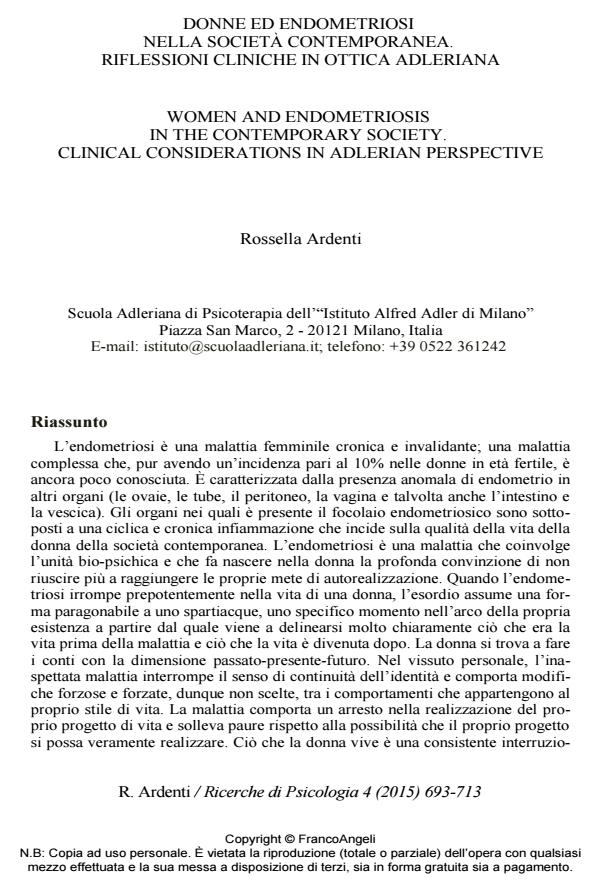Women and endometriosis in the contemporary society. Clinical considerations in adlerian perspective
Journal title RICERCHE DI PSICOLOGIA
Author/s Rossella Ardenti
Publishing Year 2016 Issue 2015/4
Language Italian Pages 21 P. 693-713 File size 99 KB
DOI 10.3280/RIP2015-004007
DOI is like a bar code for intellectual property: to have more infomation
click here
Below, you can see the article first page
If you want to buy this article in PDF format, you can do it, following the instructions to buy download credits

FrancoAngeli is member of Publishers International Linking Association, Inc (PILA), a not-for-profit association which run the CrossRef service enabling links to and from online scholarly content.
Endometriosis is a chronic and invalidating gynecological pathology occurring in about 5-10% of women in fertile age causing endometrial-like cells to grow in areas different from the uterine cavity. The survey aims to investigate the bio-psychological impact that the illness symptoms involve, leading to a progressive and utter conviction to become totally unable to cope and reach their own personal aims in life. When the disease burst in a woman life with painful and severely conditioning symptoms, its impact represents a sort of "watershed" dividing her existence in two parts: how it used to be before the illness and what sort of life it has become. Women suffering this condition have to face the three-dimensional partition of their life, past-present-future, bluntly interrupting the sense of continuity, and this entails several forced and forceful life-style modifications, far from being their own conscious choices, among the range of behaviors that formerly were so typical. The disease inevitably leads to the sense of failure in respect of the personal life-plans fulfillment and establishes a fearful and doubtful climate, deteriorating the chances that such plans could really ever be achieved. What women affected by this syndrome have to face is the interruption of their linear identities, an inferiority complex, an absolute loss of the sense of life and a devastating discouragement.
Keywords: Endometriosis, unit bio-psychological, ideal fiction, compensation fictitious
Rossella Ardenti, Donne ed endometriosi nella società contemporanea. Riflessioni cliniche in ottica adleriana in "RICERCHE DI PSICOLOGIA " 4/2015, pp 693-713, DOI: 10.3280/RIP2015-004007